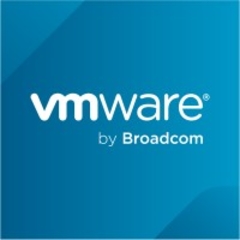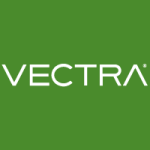We aren't a service-based company, so in terms of improvement, VMware NSX hasn't improved our company, but we need it for business purposes because we do have clients who give us all these products, and they tell us to evaluate these products in our environment and then give them reports on those products. VMware NSX is a good product, but for us, the solution doesn't add that much value to our organization.
Though I haven't been working a lot on VMware NSX, it's good to have. What I like the most about it is that its console is good, and it doesn't take a lot of effort in terms of doing my daily tasks on it or what it's meant for. VMware NSX is still a preferred product in the market.
An area for improvement in VMware NSX is that it uses up more resources and is heavy on the network.
What I'd like to see in the next release of the solution is more automation.
I've been using VMware NSX for more than two years now.
VMware NSX is a stable solution. It's very reliable.
VMware NSX, In terms of scalability, particularly at the enterprise level, is hectic. It's a complex process if you want to scale it compared to its competitors. It still depends, for example, if you've been in VM all your life or if you have been a VM administrator for a long time, you'll take comfort in something new, so people tend to go for it. If it's a new customer, an upgrade, or if the entire organization is going through a revamp, the process is quite complex. On a scale of one to five, I'll rate the scalability of VMware NSX a four.
VMware NSX has great support, and I have no complaints about it. The support for this solution is reasonable.
The initial setup for VMware NSX was pretty straightforward. In terms of our implementation plan, mostly we have standard SOPs that we have laid down for our implementation teams and we stick to those. It would still depend on the environment where we're going to execute it, for example, it could be on-premises or on the cloud, and we'd also take into consideration which type of cloud they have and what other technologies they have in their environment, so based on all of those, the implementation plan and how we're going to approach the implementation changes.
How long the deployment of VMware NSX takes would depend on the client, the environment, and the requirements, but for the basic setup or initial setup where we would just get the box and the do configuration, the IP, etc., that doesn't take more than four to five days.
Our deployment model for VMware NSX used to be on-premises, but now the deployment is mostly on the public cloud.
We used consultants for the implementation of VMware NSX.
I'm unable to give information on the pricing or licensing cost of VMware NSX because I've never been someone who looks into the economic part of any security or virtualization solutions. That's handled by an entirely different team, and I don't even have the slightest idea about the costs associated with the solution, though I've heard pricing for VMware NSX is on the higher side.
We haven't evaluated other virtualization solutions apart from VMware NSX.
VMware NSX is a solution I use at the company very often. My company is a partner of VMware and I analyze products such as the VMware NSX, and I give a detailed report on how the features are, what are the differences between the solution and its competitors, etc.
Deploying VMware NSX requires a team of four, but it would still depend on the skillset. For example, two people can do the work where one is in charge of the networking and one would act as a backup. Currently, my team of five users works on VMware NSX.
My advice to others looking into implementing the solution is to first go through the POC and the documentation before purchasing VMware NSX. Get to know the features best and find out what works for your organization and what doesn't, then take a calculated decision on whether you need the solution because some VMware solutions would be quite heavy on your environment if you are a mid-level enterprise. Other than that, VMware is a trusted name, and it has been in the market for quite some time now, and it's reliable. Though you should also evaluate other solutions, especially in terms of pricing because what I've heard is that VMware NSX is on the higher end, so it depends on what type of fees you want to check off your list. After evaluating all these factors, only then should you make that decision whether you want to go for VMware NSX or not.
My rating for VMware NSX on a scale of one to ten is seven, particularly for virtualization. Technology-wise and implementation-wise, I'm giving the solution a seven.
I would rate the solution a ten out of ten if it was less complex and had more automation. Currently, it's on the heavier side, for example, even the basic agent or basic software takes up a lot of space at the end-user level. VMware NSX should utilize fewer resources when it sits in your environment, so all the other users or other solutions in the environment would have ample resources to use. The solution shouldn't be heavy on the network.
My company is a partner but not a reseller of VMware NSX.


















